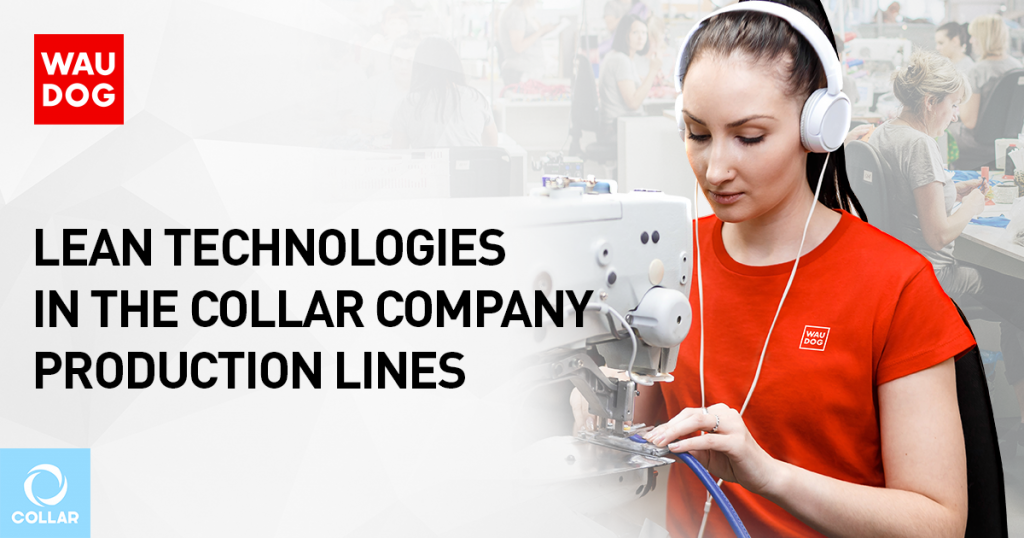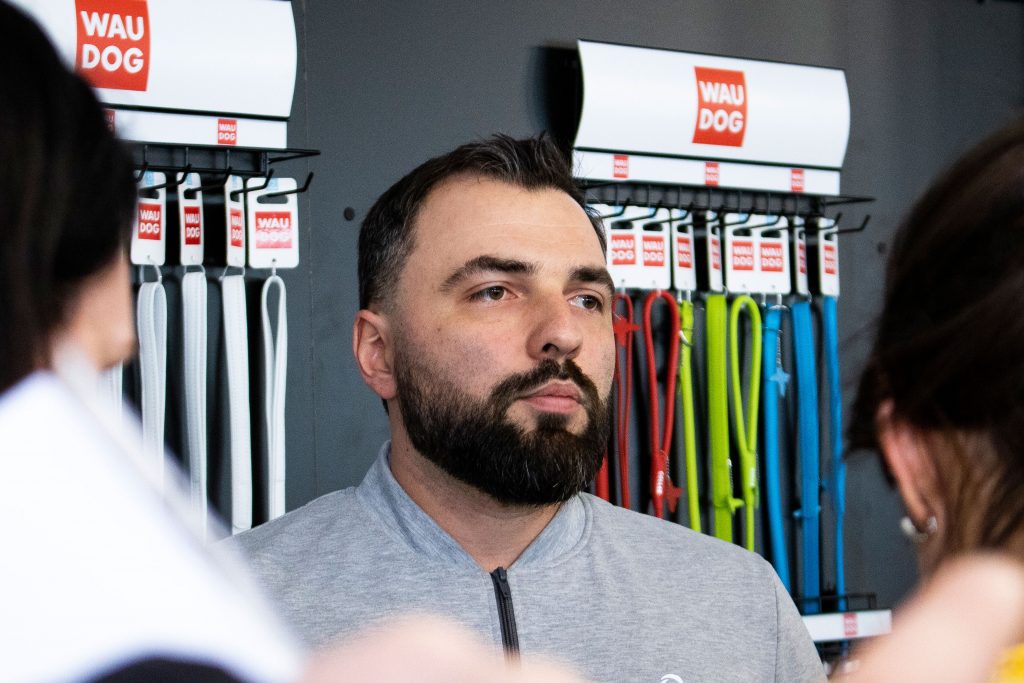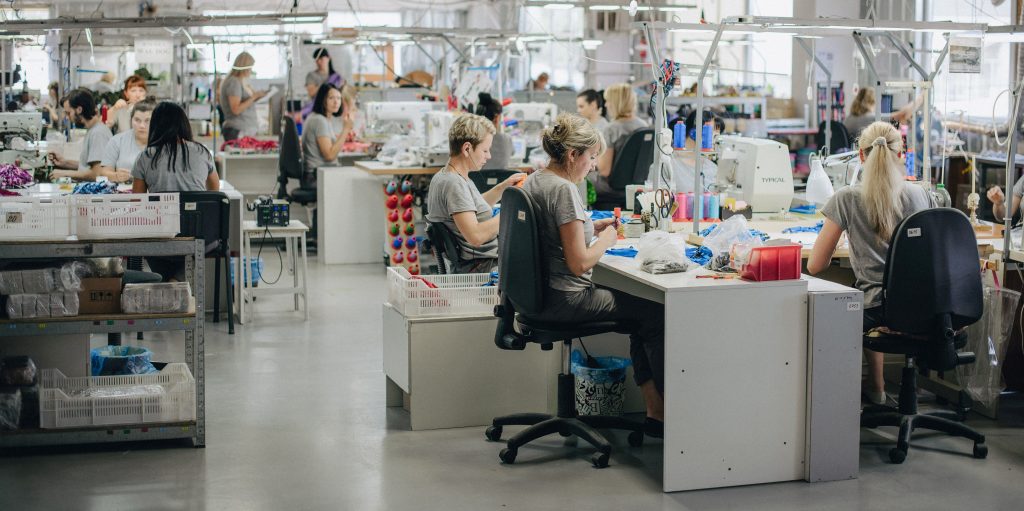Спасибо за письмо
2.5 times more effective
LEAN manufacturing tools on in the COLLAR Company production lines

The quarantine is not the reason to slow down manufacturing. One can improve the effectiveness of it 2.5 times without hiring new workers – only with the help of LEAN manufacturing tools.
Learn more about the ways to optimize the manufacturing in the interview of Production Director of COLLAR Company, Alexander Skoropys.
Please, tell me more about COLLAR Company?
COLLAR Company is an international pet products manufacturer. Its production lines have operated in Chernihiv since 1995. Now COLLAR Company has more than 500 employees and 4 offices abroad: in Poland, Spain, Russia, and the USA. Its products are sold in 70 countries all over the world.
How did you start to implement LEAN tools?
We had training on LEAN tools implementation. The main task of it was to learn how to search for losses. When the “gang” of 20 people turns your production upside down, heavily criticizing everything that has been building for 23 years – it hurts! You have to be bold to survive that. But, by understanding the whole situation, we got much more than we expected from the training.
For 4 months, from September to January 2018-2019 we learned actively. We found losses in manufacturing processes, improved teamwork, learned mapping and strategic thinking, and prepared our employees for the changes. In February we transferred to the next, active, stage. We started from the analysis of the manufacturing process of a single item: a collar. We were shocked: from the beginning of its creation and until being stored in the warehouse this collar “walked” more than 850 meters! The whole manufacturing area is one hectare and there are only 40 meters from the workshop to the warehouse. The average term of manufacturing this collar was 21 days, but it could take up to 45 days and, in case of big orders and close deadlines, it could get lost at all.

Where there any other “discoveries”?
60 percent of manufacturing was made in the last 5 days. The employees relaxed at the beginning of the month, then they remembered that the next monthly plan figures should be met and quickened their pace. The sales plan was closed in a similar way. Now the daily figures at the beginning of the month and the end of it differ by only 5-10 percent. It means that we made the workload more even. The time between shippings has shortened from one every three weeks to one in a week and more.
How and where did you implement LEAN tools?
During six months, from November 2018 to March 2019, with support from the EU and EBRD, the WAUDOG manufacturing was the subject for LEAN production implementation. During the consulting project, we did a big job of structuring the approach, figuring out the main metrics, and focusing the team on the importance of the changes and their responsibility. The separate LEAN team started its work and began to implement the LEAN instruments, enhance and support them to make the process of their integration as painless as possible.
What main processes felt the influence of LEAN tools?
As a result of the implementation of LEAN tools, the overall effectiveness has increased 2.5 times. During this process, COLLAR Company shortened the manufacturing area by 25 percent. The staff turnover is now less than 5 percent and the time that the products spend in the warehouse has decreased 40 times. COLLAR Company embraced the team concept and the new motivation system that helps to grow specialists of different processes.
Another important metric is the interoperation reserve. In September 2018, before the implementation of LEAN tools it was around 21 days and there were around 18 thousand unfinished products in one workshop only. Now the interoperation reserve is around 4 hours and there are less than 400 unfinished products in the workshop. We were able to discard the emergency work, extra working hours, and working on holidays. Now we also don’t have the Quality Control department anymore (in the WAUDOG production lines): the QC process is now a part of the overall manufacturing process. But the main result is the motivated employees who now think differently.

How the QC process is now realized?
There are three rules in the warehouse:
-Don’t make a defective product.
-Don’t pass a defective product.
-Don’t take a defective product.
All the operators are working as close to each other as possible. Each operator understands the working processes of the previous and next ones in line, therefore they can instantly see the flaws if there are any. The product is passed in a way that makes it easy to evaluate and process it. If the defective item is found, we don’t try to “save” it within the process. It is separated and stored in a special basket. We register it, understand the reasons for the defect, and work with them. We don’t fine the employees for defective products. That makes them more motivated to control the quality of the products by themselves and do it thoroughly.
Can you please give an example of LEAN tools at work?
Our common workshop has zones according to the product types. The textile products are made on the right, the leather ones – on the left. The flow is organized from the very first moments of getting materials to transferring the finished items to the warehouse. The tailoring happens closer to the entrance and the finished products appear closer to the exit. Each step, from tailoring to label attachment is made as effective as possible.
Please, tell me more about the workspace organization.
When we started to evaluate the space we take more critically, we got more of it. We discarded the big cutting tables, we are working on making the individual desks smaller to not let the operators store the unfinished items and allow them to pass the products to the next one in line faster. We use less furniture and equipment and the product movement is now more than ten times faster.
My workplace is now in the manufactory too. It looks like a sewing machine mounted on wheels that can be plugged in anywhere. Now I understand what is happening in the manufactory, can help to find losses, and eliminate them. The employees see me also. I come to work and leave the work with the rest of the staff. It raises discipline, enhances teamwork, and lets us all understand how much time we dedicate to the Company.

Were there any changes in the organization of the staff working process?
Now the employees of WAUDOG manufacturing work in teams. Each team has a leader: he or she is also an operator, like everyone else. But each morning the leaders coordinate their team and communicate with other teams. Our working day consists of four periods. At the beginning of each period, we briefly coordinate with each other to understand where we are doing fine and can help other teams and where we should work harder. We can change the plan according to the new circumstances, the main thing is to let everyone know about these changes.
We now use the qualification matrix for our employees. It lets us evaluate the stuff, teach the workers new skills, and see where we need to work more. We follow the “3×3” rule: no less than three employees should master each process, and each employee should master no less than three processes. It allows us to avoid the situations when someone is ill or takes a holiday and there is no one to do their job.
The matrix also helps us to see which processes should be “boosted” and which we should pay attention to when we have more time. We see who should be taught what skills.
We eliminated the “process wizard” idea, the idea of workers who are the only ones knowing perfectly their process. Such employees can “hold the company hostage”. The qualification matrix encourages the staff to share their knowledge with colleagues. Such an approach enhances the overall effectiveness of the manufacturing and the motivation of each separate worker.
There are two types of employees: the ones providing services – I, as an administrator, am among them – and the ones adding value: those who turn the leather stripe into a finished collar. The perfect system has more and more of the second ones and less and less of the first ones.
What are your plans for the future?
Now we are working on changing the paradigm: from “working for the warehouse” to “custom production”. Our pace and flexibility are now enough to not “hang” the money in the warehouse, but precisely satisfy the demands of the clients. The WAUDOG manufacturing will continue optimizing the workspace, implementing the LEAN tools and 5S system further. As a result, we will be able to complete the client’s request in two days after getting an order.
LEAN manufacturing (Wikipedia)
Lean manufacturing, or lean production, is a production method derived from Toyota’s 1930 operating model “The Toyota Way” (Toyota Production System, TPS). The term “Lean” was coined in 1988 by John Krafcik, and defined in 1996 by James Womack and Daniel Jones to consist of five key principles; “Precisely specify value by specific product, identify the value stream for each product, make value flow without interruptions, let customer pull value from the producer, and pursue perfection.”
Спасибо за письмо
Спасибо за подписку